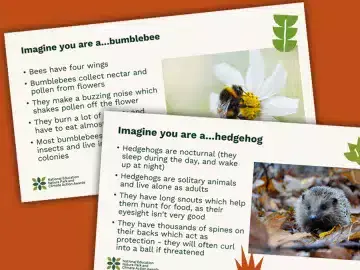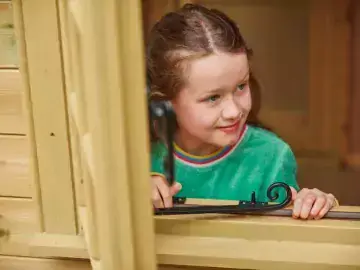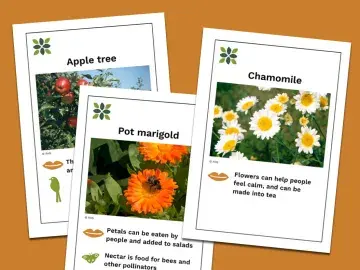
Storytelling to empathise with nature
Unfamiliarity, fear or discomfort around nature can be a barrier to children and young people engaging with the outdoors. This activity gives an example of how story books can be used to address these worries, and an accompanying creative activity to encourage learners to develop empathy for and fascination of nature.
This activity uses the book 'Yucky Worms' by Viv French to tackle fear around worms, before learners create their own worm character – but can easily be adapted for another topic. Older learners could explore worms through an alternative book: 'Darwin’s Super-Pooping Worm Spectacular' by Polly Owen celebrates the importance of worms through the history of Charles Darwin’s investigations.
Preparation
What you need
- Yucky Worms by Vivian French (or a story book of your choosing on a similar theme)
- Coloured or plain card (you could pre-cut these into strips or ask learners to cut their own)
- Pens and pencils
- Masking tape or tape
- Chopsticks or skewers
- Optional: other arts and crafts materials to decorate
Location
Indoors or outdoors
Useful guidance
Resources
Step by step
- Introduce the activity with a short discussion – if reading Yucky Worms, you could begin by asking learners to talk to their partner about how they feel about worms, and why they feel this way, before sharing with the group. If you’d like to choose an alternative book, these could focus on bugs and insects, soil or mud, or other wildlife that young people find unfamiliar or provoke fear or discomfort. Take a look at our Nature library catalogue for examples.
- Read the book aloud to the group. If you don’t have a copy of the book, you may be able to find ‘read aloud’ videos online.
- After reading the book, prompt discussion from learners on what they’ve taken away from the story – focusing on both the character’s journey as well as the nature around them. “What happened in this story? How did the boy feel at the start of the story about the worms? How did his opinion change?” “What do we know about worms now? Why might worms be useful in nature?”
- Next, learners will create their own moving worm character from art materials. If focusing on a different element of nature in your story, this activity could easily be adapted to create another character such as a bee, bird, or spider.
- Make sure that each learner has their own strip of card and materials. Show the group how to fold their card back and forth into a crinkly worm. Invite them to draw a face and, if they like, decorate their worm character.
- On the reverse, position one chopstick or skewer at each end of the worm and tape in place. These will act as handles to make the worm come alive!
- Encourage learners to come up with a name for their worm character. Where do they live? What do they like to do? Remind learners of what they might have learned from the story. You could use the Points of view activity to think about what the character likes, dislikes and needs from their environment.
Curriculum links
This activity can be used to support curriculum knowledge and skill development in science and english, alongside enhancing nature education, with age appropriate adaptations.
What to try next

Points of view for younger learners
Begin activity
Imagining our space
Begin activity
Plants and their jobs
Begin activityThumbnail image: © RHS, Credit: RHS / Edward Shaw